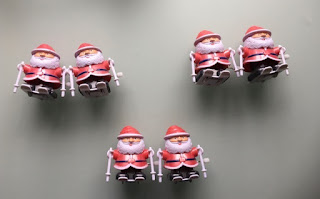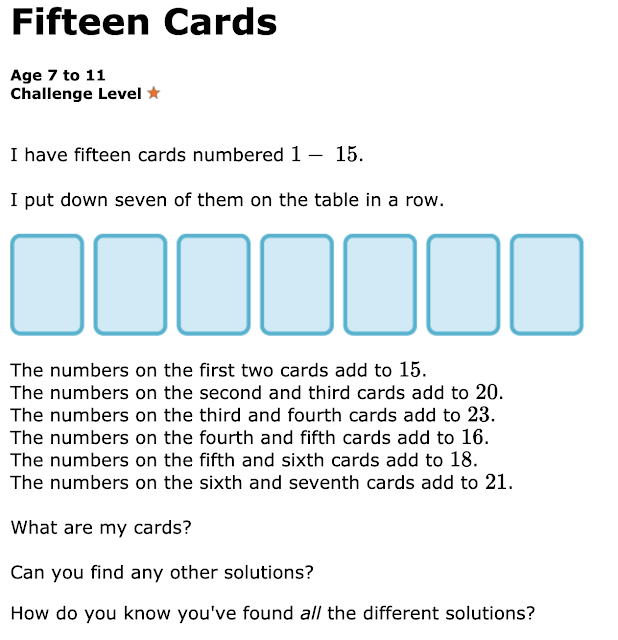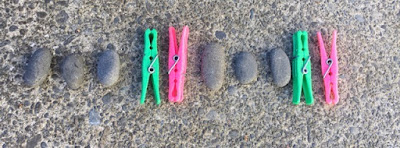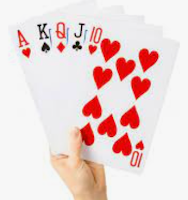Online Mathematics
Please have a look at the following links for information and resources:
1. Mathematics progressions- goals and targets for your child's current level. Progressions
2. Basic facts to support progress in Mathematics Bricks
3. ICT games link- for a range of different games/activities ICT games
Two Day - Date Game
Recently we had the date 22/2/2022, using the numbers 2,2,2,2 0,2 and 2 in any order, use the operations +, -, x and ÷ to write equations for as many of the numbers 0-20 as you can.
e.g. 2 - 2 = 0, 2÷2 = 1
Splat! is a slideshow powerpoint activity which is a very POWERFUL, HIGHLY INTERACTIVE NUMBER SENSE STRATEGY THAT CAN BE USED AT ANY LEVEL.
Click on the link and in 'view' click 'slideshow' and use your right arrow key to take you through the activity. Encourage your child to count how many dots and to try to explain how they worked out the answer. link to slideshow (numbers to 10 level) , Link to slideshow (numbers to 20, Link to slideshow (multi-splat challenge)
Splat! as a paper game. Print a copy of a page with 10 dots, make a splat shape and play a game covering a different number of dots each time. (you can cut/adapt the sheet to have more or less dots).
Worksheets
Here are some worksheets for you to work on based on your Year Level. Have a go with your family!
Rounding
Here are some activities for rounding numbers to the nearest whole number, 10 and100.
Level 1-2 - Rounding to the nearest 10 and 100
Have a look at the slideshow below:
When rounding to the nearest ten, you have to look at the one column to see if you need to round up or down.
When rounding to the nearest hundred, you have to look at the tens column.
Worksheet 1 - Rounding to the Nearest 10
Worksheet 2 - Rounding to the Nearest 100
Level 3 - Rounding Decimals
Greater Than, Less than, Equal to
Today we're going to be looking at the signs we use when comparing numbers. The signs mean greater than, less than, equal to and does not equal.
< - Less than—the number on the left is less than the number on the right; 2 < 3
> - Greater than—the number on the left is greater than the number on the right; 3 > 2
≠ - Does not equal—the number on the left does not equal the number on the right; 2 ≠ 3
= - Is equal to - both numbers are equal
One of the best ways to remember Greater Than and Less than is to think of a crocodile's mouth. The crocodile wants to eat the bigger number, so its mouth will be open to the side that has the bigger number.
Matthis' tricky (or sticky) lolly problem
Try out Matthis' problem
🍬🍬🍬🍬🍬🍬🍬
Matthis, Jamie and Ronan have 7 lollies. Matthis has more than Jamie, and Jamie has more than Ronan. How many does each person have?
Make today a Problem Solving Day!
Lollies!!!
Multiplication Activities
Today is all about multiplication. Our younger students start this learning with skip counting fun with 2's, 5's and 10's. They then move onto looking at multiplication as pictures (arrays) and then finally use their time table knowledge to solve problems.
Here are 2 warm up games you can read & play OR print & play. The dice game is best for our younger students and the snakes and ladders game is for students who can work out multiplication equations.
Song - skip counting in 5's
Take a photo showing a multiplication equation like 5 x 2 or 5 x 3 and send it to lisa.seeley@taitapu.school.nz and I will make a slide show of the pictures. Or you can take a few pictures and make your own slide show.
Time Table House Building - PRINT
Multiplication Word Problems - READ or PRINT
Number Identification
Today's activities are all about practising identifying numbers. Being able to identify a number is a critical enabler in mathematics to succeed with learning new strategies.
Number identification to 20
Counting up to 20
Games to play - Number Mat & Lily Pads
using this number grid (printable version)
Number identification to 100
Big Number Song
100 square
Dinosaur - missing numbers (1-100)
Teen and Ty Bingo
The difference between teen and ty (13 and 30) numbers can be troublesome for children, here is a simple bingo game you can easily create to learn the difference.
Number identification to 1000
Teaching video
Strand Math - Let's Tell The Time!
Watch these fun clips to warm up the body and the brain. Join in!
Other ideas: Make a clock out on your driveway with chalk!
In the NZ Curriculum Level one goes over years 1&2 of school and Level 2 goes over years 3&4 of school. There are activities below for both levels, please feel free to go between the levels to suit the needs of your child.
WARM UP!
Let's use our maths eyes by making observations of what we notice. Look at the picture below and tell someone what you notice:- What shapes do you notice?
- Is there anything you can count?
- What objects do you notice?
PROBLEM SOLVING - Level 2
Here is a link to a number problem called Fifteen Cards. You will have to make yourself fifteen cards with the numbers labelled 1-15.
This problem practises the problem solving skill of trial and improvement, working systematically and not giving up!! Good luck & have fun!
Number
Good work for today!!
- 1 or more players
- A pack of cards with the picture cards removed. Ace is worth 1.
- Shuffle the cards and lay out face up into 4 rows of 5 cards.
- The aim of the game is to remove all the cards from the table in sets of 2 or more cards which add up to 10 E.g. 8 and 2 could be removed and a 3,5 and 2 could also be removed.
- The game can be played individually, with players trying to clear as much of the table as they can.
- If played with others, take it in turns to remove cards. The winner is the person to have removed the most cards by the end of the game.
- The game can also be played by finding cards which add up to 20.
- 2 players
- 2 dice
- Paper & pen
Here are practice sheets and board games to help learn our doubles facts:
He got 7 more.
Let's start with some revision by colouring and labelling fractions:
Level: 1
Level: 2
Level: Expert
New Learning:
Activity 1) Equivalent Fractions
Look at these two pizzas, what do you notice:


The first one is 2/2 or 1 whole and the other is 4/4 which is also 1 whole. Even though they are cut differently they are both equals we call this equivalent fractions.
Take a look at one of these worksheets and have a discussion to work out which ones are the same:
Level 1/2 Equivalent Fractions
Level 2/3 Equivalent Fractions
Activity 2) Comparing Fractions
Look at these two pizzas, which one would you choose if you wanted to eat the most?


That's right the one on the left is 1/3 and the one on the right is 2/4, when you compare them you can see that the one on the right is bigger than the one on the left. We write it like this 2/4 > 1/3.
These are the greater than less than symbols: < > to know which way it goes pretend it is the mouth of a crocodile, the crocodile always eats the bigger number.
Try one of these worksheets to practise finding the bigger fraction:
Level 1/2
Level 2/3
Activity 3) Adding and Subtracting Fractions
These pizzas are both cut in the same way, they both show quarters, If we add them together how many quarters would I have?


That's right you would have 3/4.

Have a go at these worksheets to see if you can add and subtract fractions:
Level 1/2
Level 2/3
Activity 4) Word Problem Cards
Here are some fraction word problems cards to test your understanding:
Word Problem Cards
Activity 5) Fraction Hunt
Fractions are all around us! Walk around the house, yard and neighbourhood with your child. Where do you see fractions? What would you call one part of the whole? For example, one rectangular stepping stone of 13 equally sized stepping stones would be 1/13th of the stepping stones. What if the objects are of different sizes? Can they still be represented as a fraction?
Draw shapes on some concrete in chalk. Split the shape in half and shade half, name the fraction you see. Split the shape in half again, making fourths. What would you call the coloured portion now? Write an equivalence statement.
Finding ½ in an art piece. In this piece of art below, highlight where you see ½.

- How many gingerbread men are in half of the group?
- How many gingerbread men are in a third of the group?
- How many gingerbread men are in a quarter of the group?
- How many gingerbread men are in two quarters of the group?
- How many gingerbread men are in two thirds of the group?
However, students are ready for and enjoy a variety of learning at different times so feel free
to dip into activities from both levels.
*Directly compares the duration of two events
*Uses non-standard units to compare the duration of two or more events
*Tell time to the hour and half-hour using analogue clocks
- Paper
Walking to my bedroom 11 claps
2. Ask for other ideas for timing events, for example. clicking fingers or stamping.
3. List events that could be timed.
4. Take turns with your child doing the event and timing it with your chosen method.
5. Display and share the results with your child.
Activity 2: Making Clocks
during the day.
- Clock worksheet
- Digits 1 to 12.
- tell time to the hour and half hour using digital clocks
- solve time problems involving hours and half hours
- estimate the time taken for daily activities in hours and minutes
- use advanced counting or partitioning strategies to solve problems involving minutes and hour
how long is spent on these activities in a week.
Getting Started
Brainstorm a list of things your child does each week such as sleeping, playing, and eating.
How do you know 5 lots of 5 minutes is 25 minutes altogether?
How could you check?
Exploring
Show your child Copymaster 2.
1. Over the course of the next few days look at the statements individually and assess whetherHow did you work out how long she spends each day?
How could you check your calculations?
Is it reasonable to spend that long to brush your teeth? How long do you think it takes you?
How much longer do they take?
How does this compare with how long you would take to do that?
Copymaster 5 can help in these comparisons.
What made you think it was the unreasonable one? How did you check?
O'Clock, half-past, quarter-past, quarter to
Word Problem: To the nearest hour or half-hour
Word Problems: #1
Word Problems: #2
Word Problems: #3
Activity 1: Fast and Slow
- Paper
- Begin the activity by exploring fast and slow actions.
Let’s wave our hands quickly…now slowly
Let’s clap quickly…slowly
Let’s blink quickly…slowly - Ask your child to share their ideas for other fast and slow actions.
What other things can we do quickly and then slowly? - Discuss things that they know that go fast or slow. List these ideas on a chart of slow and fast things.
- Ask the students to think of their favourite fast thing and their favourite slow thing. Get them to draw these onto a piece of paper.
Activity 2: Ages
- Pictures of people of varying ages, images from the internet, photos from magazine, or family photos
- Magazines
- Show your child some pictures. Begin with a picture of a baby and get them to guess the age.
How old do you think the baby is?Do you know any babies? Who? - Move onto pictures of students ranging between 5 and 13.
Who do you think is older?
How can you tell?
How old do you think that student might be?
Is that older or younger than you? - Before you show the next picture ask the students to guess who it might be a picture of. (mother, grandmother)
What picture do you think I am going to show you next? Why did you guess that? - As you discuss the pictures display them on a line in order of age.
- Ask the students to either cut from magazines or draw 4 pictures of people of different ages.
- Get your child to either give you or a sibling the 4 pictures to order them.
Resources
- Analogue clock (with minutes marked)
- Digital clock
- Begin by looking at the minute hand on the analogue clock.
How long does it take the minute hand to get around the clock face once?
- Ask your child a number of questions about the time it takes for the minute hand to move between positions on the clock. Check by counting (in ones until the students notice that you can count in fives). Eg - How long does it take for the minute hand to go from the 1 to the 3?
- Move the hands on the analogue clock to 20 minutes after 9. Ask:
What time is on the clock?
How do you know?
Can you tell me what 20 minutes after 9 would look like on the digital clock.
- Repeat with other examples (initially limit this to minutes after the hour).
- List times for students to draw clocks. Include both digital and analogue times.
For example: - Half past 3
- 7:15
- 25 minutes past 7.
- 2:40
- 18 minutes past 10.
Activity 2: Timing activities
Resources
- Clock with second hand
- Digital watches or phone
- Start and End time recording sheet
- Begin by posing the question:
How long does it take to write your full name?
- Ask your child to estimate and then write it down. Time them while they are writing.
- Brainstorm a list of activities that will take a short time to complete (but longer than a minute). For example:
- Running around the house x amount of times
- Writing the digits to 100
- Eating an apple
- Reading a picture book
- Get your child to complete some of the activities listed. Tell them that they are to record the start and end time for each activity on both a digital and analogue display. Ask them also to record out how many minutes the activity took.
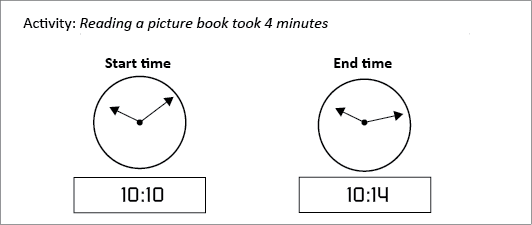

If you would like to try an extra to the lessons/tasks your teacher has set you, you can try both:
- Begin by asking your child to tell you about the first thing they do when they wake up.
The first thing I do is look out the window.
What do you do? - Get them to draw the first thing that they do on the first segment of the strip.
- Next ask your child to think about the last thing that they do each day. (In bed asleep).
- Draw this on the last segment.
- Now ask your child to think about the other things that they do during the day.
- Get them to fill in the other pictures on their day chart in time order.
- Join the ends of the strip to make a wrap-around-book.
- Colour in the pictures and ask them to write a sentence explaining what they are doing in each picture.
- A device to measure a minute.
- Begin by asking your child how many times they think they could write their name in a minute. (estimate)
- Test out to see how close their estimate was.
- Brainstorm together for other things that they could try to complete in a minute. E.g.
- counting by 2’s
- hopping
- heart beats
- eye blinks
- jumping jacks
- bounce a ball
- Make a chart to record your data.
Idea
|
Estimate
|
Actual amount
|
Activity: Exploring Analogue Time
- Discuss times of the day when well known events happen and have your child model these times on the analogue clocks they have made. At first focus on hours, e.g. school starts at nine o’clock; eight o’clock is bedtime. Then move on to half-hours, e.g. half past ten is playtime.
- As your child works at modelling times, focus on the position of the hands (big hand shows minutes and little hand shows hours) and the terms half past and o’clock.
- Children can record some of their favourite times of the day and draw clocks showing those times.
- Talk about the types of insects that you might see if you looked in the garden. As the students name the insects in this problem display them on paper.
- Read the problem for the students to work on.
- Brainstorm for ideas about how to solve the problem.
- As they work they may choose to cut out the objects to form groups or they may redraw them.
How are you sorting the insects?
How many different insects are there?
What can you tell me about the insects in the garden? - ALTERNATIVELY YOU COULD GO OUTSIDE AND COLLECT YOUR OWN INSECT DATA TO WORK WITH.
- Extension to the problem, make a picture graph of the insects.
MATH CHALLENGE: Snakes and Ladders
A Snakes and Ladders board has the number 1 moving up to 100.

Can you...
Play a game of snakes and ladders at home











